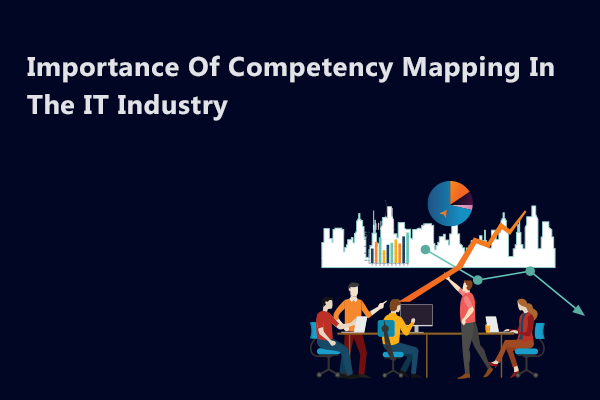
Importance of Competency Mapping in the IT Industry
To sustain in this highly competitive and continuously evolving IT world, it is crucial to understand the capabilities at various levels in the organization. They help to evaluate process management and when to procure, retain, and develop competent team members.
Scientists have defined competency as the combination of observable and measurable knowledge, skills, and individual traits. These can collectively contribute to enhanced employee performance, productivity and ultimately result in organizational success.
There have been various advancements in corporate training to help IT organizations manage their competencies. One such advanced method is competency mapping.
What Is Competency Mapping?
Competency mapping refers to the process of identifying and assessing the competencies of an organization and incorporating them into various processes such as job evaluation, training, recruitment, and learning and development. The test is one of the most accurate methods of identifying individual behavioral and job-related skills.
There are several factors that determine the skills required to execute a job, such as technical challenges, technical and functional competencies needed, organizational structure, nature of processes and assigned activities, business nature, social culture, and behavior and attitude of the employee. Aligning the skills required to perform activities productively with the individual's skills and attributes are the benefits of implementing different types of competency mapping.
Why Does IT Industry Need Competency Mapping?
With its significance in the world economy, the IT industry has played a pivotal role in creating jobs. Many IT industries have been praised internationally for their success in terms of delivery and business models. This success has been largely due to the intrinsic quality of the software development teams employed by IT companies. Most IT firms are considered successful due to their team orientation, delivery approach, processes, and customer focus.
However, following are a few of the main problems faced by the management in IT industry:
- The majority of IT companies do not recognize the complete potential of an employee and lack in managing his/her competency.
- There is a great deal of difficulty in finding skilled workers who can help organizations achieve and sustain competitive advantage.
- Keeping a committed and competent workforce in today's vastly competitive and globalized market has become a herculean task.
- Employees lack well-established systems for assessing their skills and distinctive competencies.
Within organizations, there is a big gap between the factors for job success and those for work roles.
Why Is Competency Mapping Crucial for Corporates?
Despite its complexity, different types of competency mapping are effective in aligning the employees with the organization's goals, resulting in a highly productive workforce. Increasingly, IT organizations are realizing the importance of establishing competency models to increase employee productivity, skills, and resiliency. Every organization should develop distinctive competencies considering the changing business ecosystem and the epidemic-driven developments in the IT industry.
There are several reasons why Competency Mapping is needed in the IT industry:
We have mentioned a few below:
- Global Business Ecosystem is Getting Restructured: The pandemic has disrupted the global business ecosystem as well as the IT industry. In the current environment, it is essential to have a competency model that aligns employees and new talent with the organization's goals.
- Recruitment of Right Talent: Competency mapping highlights the skills required for each task in a job function. Human resources managers and leaders can use it to design a selection process that focuses on hiring the right candidate for the job.
- Retaining highperforming employees and best talent: An effective organization relies on the retention of high-performing employees since they contribute a lot to the company's success.
- Changing workplace dynamics: In recognition of the efforts of such employees, competency mapping plays a vital role in ensuring that they are adequately rewarded.
- Increased customer focus: IT organizations have become highly customercentric in the last decade. To remain competitive in the global market, it is imperative that projects are delivered effectively and on time. As long as a high-performance team is available to deliver according to the agreed-upon standards, it is possible.
Benefits Of Competency Mapping For The Employees
- This process enables employees to understand the expectations of their organizations and make better decisions, enabling them to be more productive.
- Training and development workshops allow employees to learn new skills and put them to use on a variety of projects.
- It assists in identifying the leaders and managers within the organization who can perform technical and managerial tasks.
- Having the right job expectations and skill mapping increases employee productivity and aligns them more closely with organizational standards.
- Employee recognition is provided by this framework.
- It enables employees to re-skill and up-skill themselves in various technologies.
